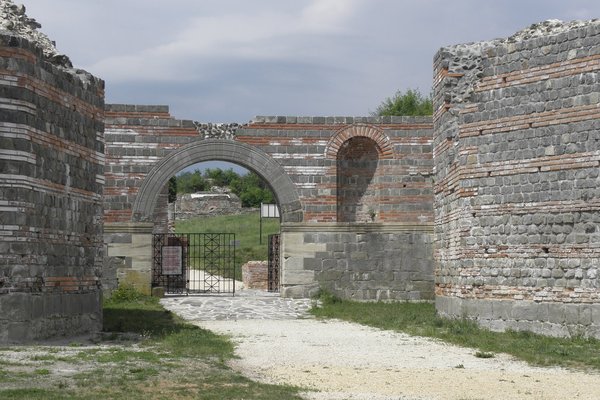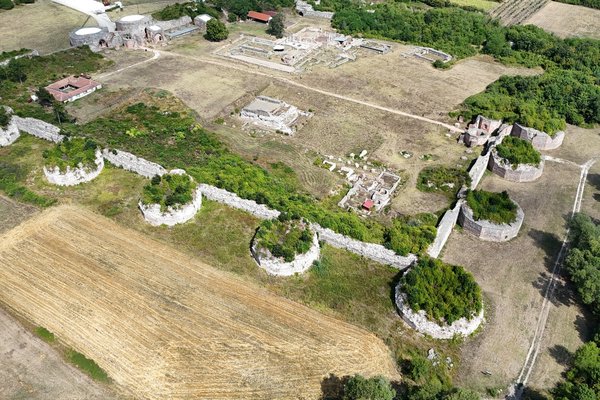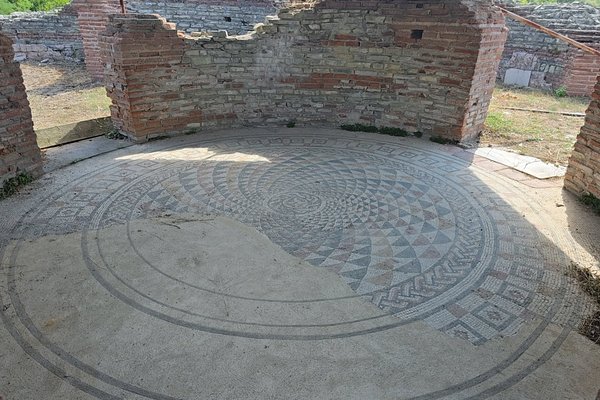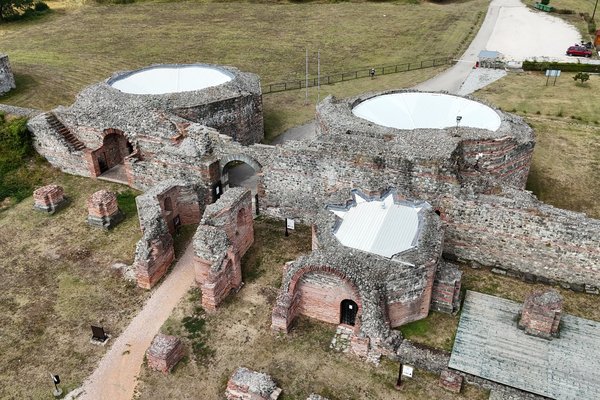Serbia
Gamzigrad-Romuliana
Gamzigrad-Romuliana, Palace of Galerius, is one of the most important Late Roman sites.
Construction works started in 298 by the Tetrarchy Emperor Galerius to mark the place of his birth after a victory over the Persians. The palace was designed to be a representative Imperial residence and was decorated with exceptionally fine mosaics, baths and impressive gates. The site also includes the mausoleums of the Emperor and his mother, which are visually linked to the palace.
Community Perspective: best visited with your own wheels from Belgrade, the palace is impressive with its massive towers and walls. Don’t overlook Magura Hill, where the mausolea are.
Site Info
Official Information
- Full Name
- Gamzigrad-Romuliana, Palace of Galerius (ID: 1253)
- Country
- Serbia
- Status
-
Inscribed 2007
Site history
History of Gamzigrad-Romuliana
- 2007: Inscribed
- Inscribed
- Type
- Cultural
- Criteria
- iii
- iv
Links
- UNESCO
- whc.unesco.org
- Official
- Related
-
- muzejzajecar.org — National Museum Zajecar
- dainst.org — German archeological project
- serbia.com — Serbia Travel
All Links
UNESCO.org
- whc.unesco.org — whc.unesco.org/
Official Website
Related Resources
- muzejzajecar.org — National Museum Zajecar
- dainst.org — German archeological project
- serbia.com — Serbia Travel
News Article
- Dec. 16, 2007 b92.net — A UNESCO flag has been raised at the archaeological site of Felix Romuliana in Gamzigrad.
Community Information
- Community Category
- Archaeological site: Ancient Rome
Travel Information
Recent Connections
-
Perfect Inscriptions
2007 -
Cult of Cybele
Includes a temple to the cult goddess K… -
Residences of Roman Emperors
Palace of Galerius - "conceived and bui…
Connections of Gamzigrad-Romuliana
- Geography
- History
-
-
Residences of Roman Emperors
Palace of Galerius - "conceived and built by one of the Tetrarchs, Emperor Galerius..(He) started construction in 298 AD.... to mark the place of his birth. (Wiki)See en.wikipedia.org
-
The Tetrarchy
Felix Romuliana was a Roman palace built commecning 297 by Galerius to commemorate a victory over the Persians at Narses. It was located in the region of his birth place and named after his mother . It was possibly conceived of as his "retirement home" as per the rules of the Tetrarchy! However the death of the western Augustus, Constanius, in 306 led to Galerius becoming the "senior" Augustus and upgrading the grandeur of the structure.
-
- Architecture
-
-
Brick architecture
Opus latericiumSee en.wikipedia.org
-
Mosaic art
-
Octagons
The fortifications have octagonal towers
-
- World Heritage Process
-
-
Perfect Inscriptions
2007
-
- Religion and Belief
-
-
Cult of Cybele
Includes a temple to the cult goddess Kibela or CybeleSee vici.org
-
- Constructions
-
-
Tetrapylon
See whc.unesco.org
-
Mausolea
Two mausolea: one for Galerius and one for his mother Romula -
Baths
Classical Roman baths -
Tumuli
The mausolea of Galerius and his mother are hidden in two tumuli, visible from the main palace
-
- WHS on Other Lists
-
-
U.S. Ambassadors Fund
Conservation of an Ancient Roman Tumulus in the Magura Hill Imperial Palace at Felix Romuliana (2011)
-
- Timeline
-
-
Built in the 3rd century
late 3rd century (AB ev)
-
- WHS Names
-
-
Named after individual people
Queen mother Romula of the Roman tetrarch Galerius
-
News
- b92.net 12/16/2007
- A UNESCO flag has been raised at t…
Recent Visitors
Visitors of Gamzigrad-Romuliana
- Alexander Barabanov
- Alexander Lehmann
- Andrew_Kerr
- Anna Wludarska
- Argo
- Astraftis
- Atila Ege
- Bin
- Cezar Grozavu
- chenqtao
- Christoph
- Cirene Moraes
- Clyde
- Dagmara
- del
- Dimitar Krastev
- Els Slots
- Eva Kisgyorgy
- Evgenii
- Fan Yibo
- Filip Murlak
- FS
- GeorgeIng61
- Gernot
- Harry Mitsidis
- Iain Jackson
- Ivan Rucek
- Jarek Pokrzywnicki
- Jasam
- Jeffrey Chai
- Jezza
- John Smaranda
- Jonas Kremer
- Juha Sjoeblom
- jxrocky
- KarenBMoore
- Knut
- Lara Adler
- Lisu Marian
- Luis Filipe Gaspar
- Lukasz Palczewski
- Martina Rúčková
- Michael Turtle
- Mikko
- Milan Jirasek
- Miloš Tašković
- nan
- Nihal Ege
- nikolamus
- Patrik
- Philipp Peterer
- Pincze
- Rafał Kałczuga
- Randi Thomsen
- Roger Ourset
- Roman Bruehwiler
- Roman Raab
- Sabrina Liebehentschel
- S. Anril Tiatco
- Sergio Arjona
- Solivagant
- Stanislaw Warwas
- Svein Elias
- Szucs Tamas
- Tarquinio_Superbo
- Tevity
- Thomas Buechler
- Thomas Harold Watson
- Thomas van der Walt
- triath
- Tsunami
- Twobaconsandaboston
- UncleSlavi
- WalGra
- Walter
- Westwards
- Wo_ko
- Xiong Wei
- YaroMir
- Yevhen Ivanovych
- Zach
- Zoë Sheng
Community Reviews
Show full reviews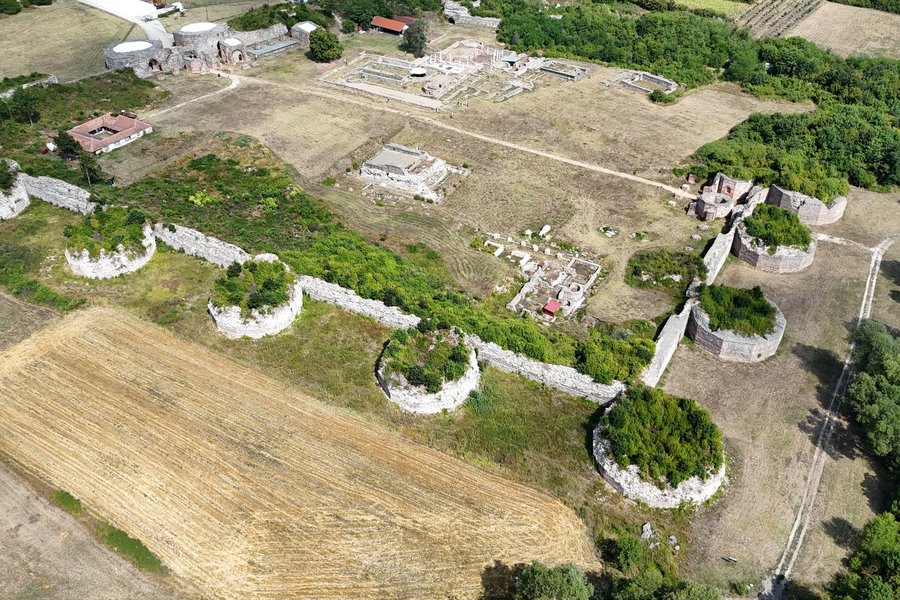
Our first inscribed site that we visited in Serbia. We visited on the 31 July 2025. Hiring a car from Belgrade we drove to Zajecar where we based ourselves to visit this site. Getting to the site is well signposted and bitumen roads all the way there. There is a small ticket office and carpark out front of the site and entry was 500 Serbian Dinar per adult. About 200 metres up the road before you arrive there is an extremely large building that is destined to be the museum for this site, however it was still under construction (or closed for renovation) when we visited. There were a couple of other visitors to the site when we were there. There was no restrictions on photography or videos on the site and permission was granted to use the drone for some great footage. We are travelling with our Boston Terrier Dog and it was dog friendly with a number of 'local caretaker dogs' on site as well.
The Fortress / Palace is known by a number of names, but is more commonly referred to in the area as Felix Romuliana, which was named after the mother of the Emperor who commissioned this Palace, Calius Valerius Galerius Maximianus. It was built in the late 3rd and into the early 4th Century.
Walking around the site, there are numerous information panels that provide details on the history of the site as well as providing information on the buildings and ruins within the …
Keep reading 0 comments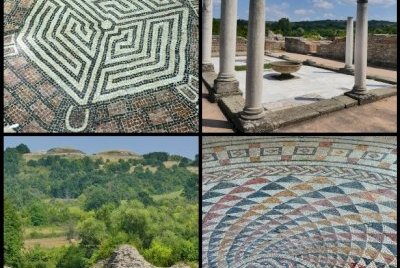
I visited this WHS in 2022 as the first Serbian WHS en route from Pecs, Hungary. Upon arrival I chose to buy the combined ticket including an entrance to the national museum in Zajecar, since I had my hotel there for the night. Like Diocletian's Palace in Split, the palace was designed to be a representative imperial residence, and the fortification perimeter nowadays reminded me quite a lot of the Bashtava Fortress in Albania or the high walls of Villa Adriana in Tivoli, Italy.
In total, within the palace walls, there are the partially reconstructed remains of 20 circular towers and two gates, thermal baths, a number of temples with mosaic floors (only a couple visible in situ as like in Albania, the bigger ones are covered with gravel and sand, while the best ones are in the local museum (worth visiting as a value added addition to your visit)), and the remains of Christian basilicas. As such, Romuliana could be viewed as a royal palace, a church property, an early Byzantine settlement and a Medieval settlement. Entrance and exit to the site proper are through the Western Gate. Near both the Western and Eastern Gates, one can find the UNESCO WHS inscription plaques. Just behind and above the Eastern Gate, one can see the two mounds on Magura hill (with the foundations of two mausolea behind them), marking the place where Emperor Galerius and his mother Romula were buried and where the apotheosis ritual was done.
The …
Keep reading 0 comments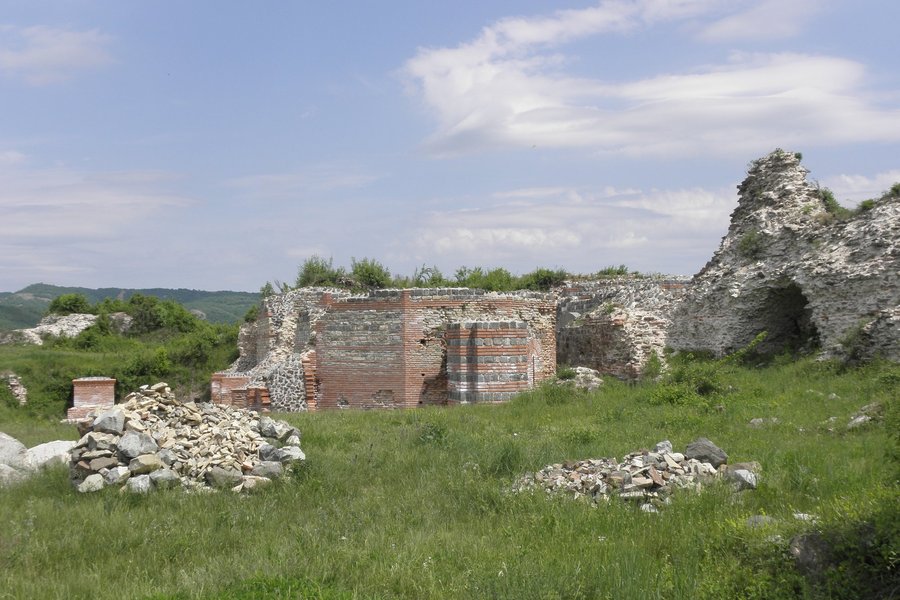
Visited in July 2018, Felix Romuliana was a temple complex created by Galerius, a Roman Emperors who used Christians as part of the spectacles of the Ludi (Roman festivals). Incidentally, during his reign as Caesar, he came out with an “edict of toleration” (311 CE), which despite his strong prejudice against the Christian religion, ended Christian persecution.
Going to the site was not easy. I wanted to do it on my own (i.e. public transportation). However, several blogposts did not recommend public transportation. Several online posts were suggesting to rent a car. Others were suggesting to book a trip via travel agencies or via private guides. I decided to look for an agent. Luckily, a colleague from Belgrade introduced me to Miross Travel Agency (Thank you Miross for saving me and for a very amazing itinerary. I give you 5 stars for an outstanding service). Its staff members are most helpful (Another 5 stars!). They drafted an itinerary and I gladly took it. My guide was Goran. I was happy that he knew Serbian history very well and that included some historical notes regarding Galerius.
The site is a 3-hour drive from Belgrade. At first, we navigated the expressway and after two hours, we exited towards the city of Zaječar. From the exit toll, another hour-long drive along a vast plain of sunflowers and wild shrubs. When we reached Felix Romuliana, I thought it just popped out of nowhere!
From what I learned from my guide and …
Keep reading 0 comments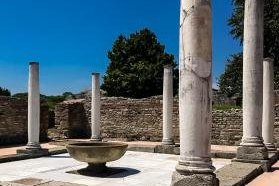
I went to Gamzigrad-Romuliana on Thursday of last week (late July). I don't know if I would recommend Serbia in high summer, as it was over 100 degrees Fahrenheit most days. But the site itself was beautiful.
I was staying in Belgrade, and hired a driver to take me to the site instead of staying locally for the day.
The ruins themselves were beautiful. Not as spectacular as other ancient Roman sites, but Magura hill (where Galerius and Romula underwent apotheosis to become gods), was beautiful and interesting.
If you're in Belgrade, it's a three hour drive on a very open highway (not a small mountain highway like you get in western Serbia).
I have a longer review and more pictures here: UNESCO World Heritage Site: Gamzigrad-Romuliana, Palace of Galerius.
Keep reading 0 comments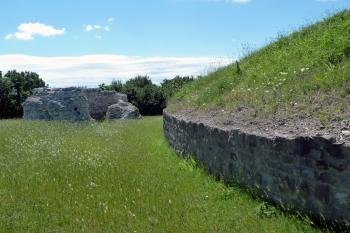
None of the 4 previous reviews of this WHS has mentioned a visit to Magura - the hill situated 1km to the east of the Palace (but still within the inscribed area) which the Nomination File describes as a “Memorial Complex”. As Els mentions, the tumuli on this hill are clearly visible on the skyline from the palace area. In June 2017 we had a car and were able to drive, so it is perhaps easy for us to say that everyone should do it, but it does provide both a fine view of the Palace from a high point and a much better understanding of the rather strange process of “Apotheosis” by which Galerius and his mother Romula were deified.
The motorable track up to Magura starts by turning left from the car park (the main exit is to the right!) and goes around the southern wall. It was partly hidden by high uncut June grass when we were there but just keep following it uphill away from the palace and you will eventually reach a small area with a “P” sign just below the tumuli.
At the time I am writing this review we have a “Connection” for this WHS with “Tumuli” which states “The Mausolea of Galerius and his mother are hidden in two tumuli”. This is not the case - as those who go up to the Magura will discover, there are 4 structures there (See photo of 1 “pair”). …
Keep reading 0 comments
I visited this site few days ago. It's not so difficult to reach if you're traveling by car. Few kilometers from the main road and you are there. The significance of this place is great for Roman history, Galerius, Caesar at the time when Diocletian was August. Place can be very quick visit. They are still working on the excavation, with support from the German government. An interesting fact is that the Galerius was one of the biggest opponents of the Christians, and continued their fierce persecution and murder after the death of Diocletian. Admission is 200 dinars (less than 2e).
Keep reading 0 comments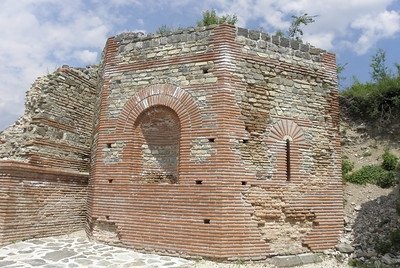
Felix Romuliana, the fortified palace, is a pleasant surprise. It is situated in the countryside of eastern Serbia. I arrived around midday, just when the sun broke through again. Two things stood out immediately: the almost perfect walls around the palace complex and the ticket booth at the entrance. This was my first taste of “Serbian tourism”: a bus full of schoolchildren was already there, and later another group arrived (I sneaked up on them and believe they were Belgian tourists). And I paid my first entrance fee here in Serbia. It costs 200 dinar, just under 2 EUR.
The palace walls were made out of opus mixtum, a mix of brick and stone. This results in fine decoration all along the fortifications. It looks so good (also from a distance when you’re driving up the road), I initially thought it was a reconstruction that had gone a bit over-the-top. But the walls are all original.
The site within the walls is mostly overgrown with grass. I read in the AB evaluation that they plan to leave it this way, as more archeological digging would lead to more harm. You can walk around freely, except for the mosaics on the ground there are no forbidden areas or warnings not to touch anything.
Also special is the visual link that has been made between the palace and the two tumuli on a nearby hill. This is where Galerius and his mother were buried. For Emperor Galerius, it was …
Keep reading 0 comments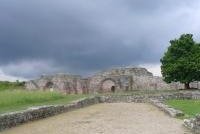
Gamzigrad Romuliana is a bit off the beaten track Wh site (as all of Serbia is), but really worth to see. It is not a great adventure to go there – but requires some time. Can be done as a day trip from Belgrade – providing you have your own vehicle, and you get up quite early. Most visitors will approach Gamzigrad from the Belgrade – Nis motorway –as we did it. There is a huge brown signboard before the exit, so you cannot miss it.
From trhe motorway it is less than 100 km, but be prepared, road conditions are quite various. After a couple of km of really good road we had to make a detour on curvy and humpy-bumpy country roads. In a sunny summer day it could have benne fun – driving through the Serbian villages. At night, in a thunderstorm it was a nightmare. A road seemed to be endless, but after almost two hours we reached Zajecar. This sleepy provincial town (the name means something like Rabbitville in Serbian), proved to be very friendly and surprisingly good looking. We found a cheap hotel (USD 30 for a double) and prepared ourselves for the next day in Ganzuigrad.
To reach Gamzigrad from Zajecar is easy, the road is well signposted, and in the sunshine the whole area looked much friendlier than last night. We first could see the site from the narrow tar road leading to the entrance through the fields. It is a fantastic …
Keep reading 0 comments
